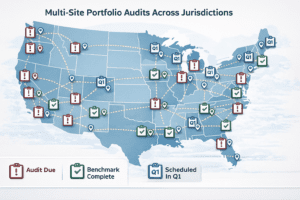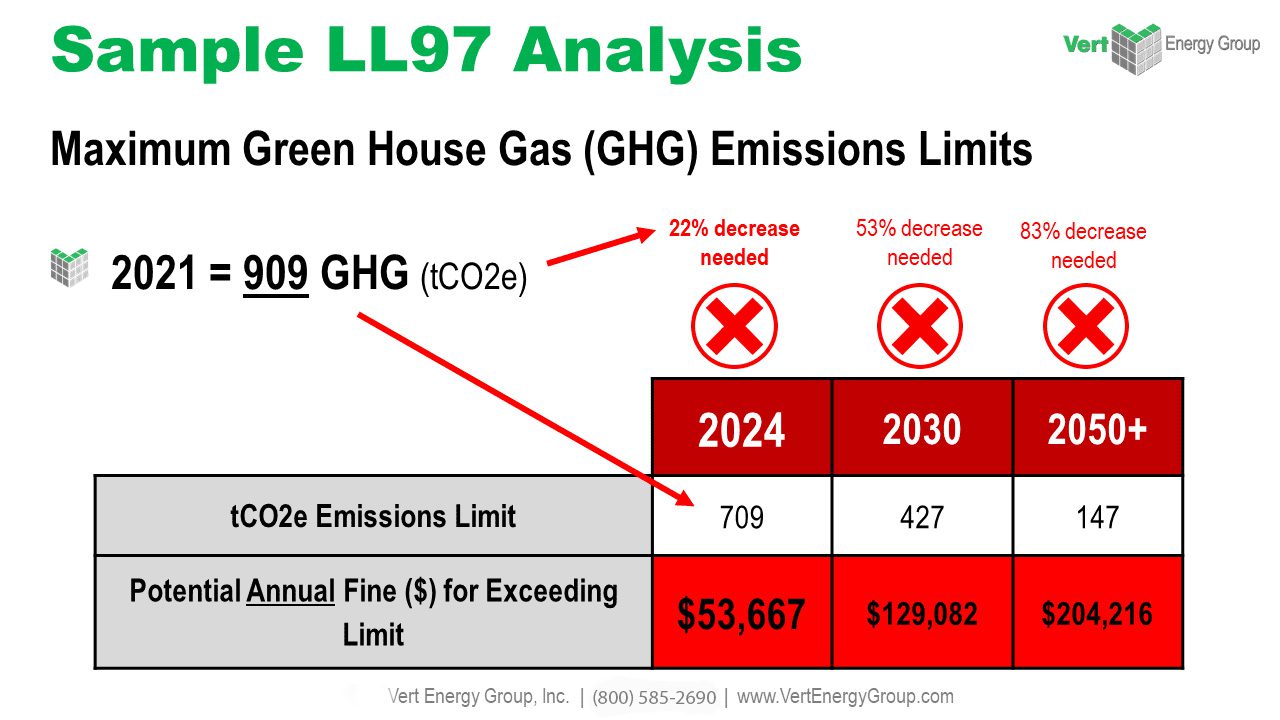In today’s environmentally conscious world, energy benchmarking laws serve as both a compass and a mandate for organizations aiming to reduce their carbon footprints and enhance energy efficiency. These laws, complex and varied across jurisdictions, necessitate a systematic approach to measuring and reporting energy consumption. Technology’s role in compliance is not merely supportive; it is transformative, reshaping the paradigms of energy management and regulatory adherence.
I. Introduction
Energy benchmarking laws require buildings and industrial entities to measure their energy use against established standards with the goal of encouraging energy conservation and reducing greenhouse emissions. This process involves collecting, analyzing, and reporting energy consumption data which can be a hefty task without the right tools. The importance of compliance stretches beyond adhering to legal requirements—it’s also about corporate responsibility, operational efficiency, and in many cases, cost savings. In this context, technology emerges as the linchpin in the process, facilitating compliance through innovative solutions and automated processes.
II. Understanding Benchmarking Laws
Energy benchmarking laws are not a one-size-fits-all approach. They vary significantly depending on geographical locations, the size of businesses, and the sectors they represent. For example, in New York City, the Local Law 84 mandates annual energy and water benchmarking for buildings over a certain size. These laws serve to make energy usage transparent, promoting an increase in energy efficiency and providing valuable data to inform public policy.
In sectors such as real estate, manufacturing, and hospitality, benchmarking enables companies to track their performance over time, compare it with similar entities, and plan energy-saving measures effectively. The importance of benchmarking across these industries is amplified as stakeholders—from investors to consumers—increasingly prioritize sustainability and efficiency.
III. Role of Technology in Benchmarking

The journey from manual spreadsheets to sophisticated, integrated systems marks the evolution of technology in benchmarking. The advent of Internet of Things (IoT) devices, enhanced by cloud computing and advanced analytics, has provided unprecedented levels of accuracy and ease in the benchmarking process. For instance, smart meters and sensors transmit real-time data to cloud platforms where advanced analytics churn out insights, not just numbers, enabling businesses to meet compliance requirements while optimizing their energy strategies.
The automation of data collection and reporting processes through cutting-edge software ensures that human error is minimized, and compliance becomes a more streamlined process. Furthermore, these technologies empower organizations to go beyond mere compliance, unlocking insights that drive strategic energy management decisions.
IV. Case Studies
Real-world applications vividly illustrate the impact of technology on energy benchmarking compliance. Consider a scenario where a commercial real estate company integrates an EMS to automate energy data collection and reporting across its portfolio. By doing so, the firm not only ensures compliance with local regulations but also gains actionable insights that result in energy-saving initiatives, leading to cost reductions and enhanced market competitiveness.
On the flip side, there are cautionary tales, such as a manufacturing enterprise that incurred financial penalties due to inaccurate energy reporting—a consequence of relying on outdated, manual processes. Had this company invested in automated energy tracking technologies, it could have avoided non-compliance costs and potentially reaped the benefits of energy optimization.
V. Compliance Technologies
Compliance technologies encompass a range of tools and solutions designed to meet the specific needs of energy benchmarking. Beyond basic energy management software, we now see platforms that incorporate real-time monitoring, predictive analytics, and even machine learning algorithms to optimize energy usage patterns.
For example, Energy Star Portfolio Manager is a widely used online tool that allows users to track and manage energy and water consumption, as well as greenhouse gas emissions. Meanwhile, AI-driven solutions can predict future energy needs based on historical data, external weather conditions, and other variables, providing a level of sophistication that was unimaginable just a decade ago.
Potential limitations like cost barriers, technological complexity, and data management issues do exist. Organizations must approach these challenges by selecting appropriate technologies that align with their specific needs, investing in staff training, and adopting best practices in data governance and cybersecurity.
VI. Future of Technology in Benchmarking Compliance

Predicting the future often involves looking at the trajectory of current technological trends. In the context of energy benchmarking, the continued evolution of AI, machine learning, and automation is expected to make compliance more efficient and insightful. We can anticipate a future where technology not only manages compliance but also anticipates regulatory changes, enabling organizations to remain proactive in their energy management strategies.
The convergence of benchmarking technology with data privacy and cybersecurity will also be a defining feature of the future landscape. As energy benchmarking depends increasingly on data, the importance of securing this information becomes paramount. Businesses will need to invest in robust data governance infrastructures to ensure the integrity and security of their compliance processes.
VII. Conclusion
The intersection of technology and energy benchmarking laws is not a temporary checkpoint; it is a continuous journey toward a more energy-efficient and environmentally responsible future. This blog has illustrated the transformative role of technology in facilitating compliance with these laws, enhancing operational efficiency, and driving strategic energy management.
As businesses look ahead, the imperative to adopt and adapt to technological advancements is clear. It is a commitment to not only meet regulatory requirements but to excel in a competitive marketplace where sustainability is a differentiator. By embracing the tools and solutions that technology offers, organizations can ensure they not only comply with benchmarking laws but also lead in the global effort to foster a more sustainable world.
VertPro.com serves as a resourceful platform for property owners and managers seeking to enhance their buildings’ energy efficiency. The site offers a range of services, including Commercial Energy Audits, Benchmark Compliance consultancy, and a Construction Marketplace. At the heart of VertPro® is a suite of SaaS technology-based solutions designed to assist in navigating the complexities of Energy Benchmarking and Energy Audits/RCx Plus, while ensuring adherence to over 60 Energy Benchmarking and Energy Efficiency Laws across the country.
For those looking to improve their property’s energy usage and operational value, VertPro.com provides a diverse array of tools and information. The site aims to facilitate a better understanding of energy efficiency practices and legislation, helping building owners and property managers make informed decisions about their energy strategies while complying with all energy ordinances and laws.














